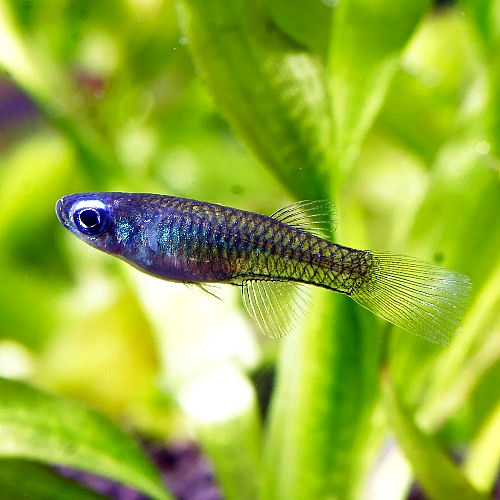🐍 Indian Mud Moray Eel (Gymnothorax tile)
🐍 Indian Mud Moray Eel (Gymnothorax tile)
Oddball Predator • Brackish to Marine Eel • Ambush Species
📋 The Indian Mud Moray (Gymnothorax tile), often sold as the Freshwater Moray, is a striking eel with a brown to tan body patterned with irregular pale spots. While it can survive temporarily in freshwater, it requires brackish to marine water conditions to thrive long-term.
Reaching up to 28 inches, this eel is smaller than the giant morays but still requires a large, secure aquarium with caves and hiding spots. It is a shy ambush predator, often resting with only its head exposed while waiting for prey.
They are best kept by experienced aquarists in brackish systems with stable salinity. They may accept prepared foods but often prefer live or fresh meaty foods.
💡 Highlights
✨ Brown body with pale spots – unique mud-patterned appearance
⚪ Brackish-to-marine eel – not truly freshwater long-term
📏 Reaches 28" – smaller moray but still large
✅ Ambush predator – hides in caves, striking at prey
🐠 Oddball eel – suitable for advanced aquarists
🧾 A Quick Look at the Indian Mud Moray Eel
📛 Common Name: Indian Mud Moray Eel / Freshwater Moray Eel
🔬 Scientific Name: Gymnothorax tile
👨👩👧 Family: Muraenidae
🌍 Origin: Indian Ocean, Bay of Bengal, Indonesia, Sri Lanka
📏 Max Size: 60 – 70 cm (≈ 24 – 28")
💧 pH Range: 7.5 – 8.5
🌡️ Temperature Range: 24 – 28 °C (75 – 82 °F)
🧠 Care Level: Advanced – brackish/marine system required
💖 Temperament: Semi-aggressive predator
🪸 Reef Safe: With caution – may eat small fish and crustaceans
🏠 Min Tank Size: 250 L (65 US gallons)
📌 Tank Level: Bottom crevices and caves
🧬 Captive Bred: ❌ No
🌿 Wild Caught: ✅ Yes
⏳ Lifespan: 10 – 15 years
🍽️ Diet: Carnivore (fish, shrimp, squid)
🐣 Reproduction: Oviparous – not bred in captivity

















